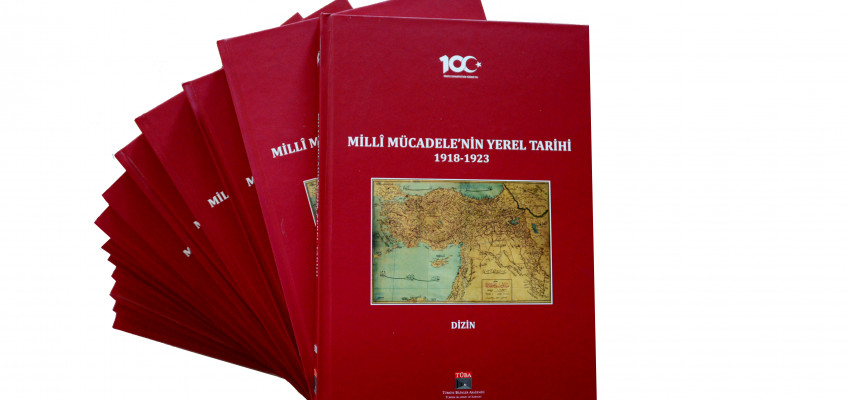The Preserved Spirit of the National Struggle Brought to Light
The work titled "Local History of the National Struggle 1918-1923", prepared in cooperation with TÜBA and Fatih Sultan Mehmet Vakıf University, was published in 13 volumes under the editorship of Assoc. Prof. Dr. İlhami Danış, Assoc. Dr. Mustafa Göleç and Assoc. Dr. Zeynep Kevser Şerefoğlu. The first edition of the work was presented to President Recep Tayyip Erdoğan at the 100th Anniversary TÜBA-TÜBİTAK Science Awards Ceremony.
Memories, diaries and oral sources in the depths of history were consulted.
In parallel with all these activities, for the first time, Türkiye’s memory of the National Struggle was analyzed within the framework of 7 regions and 81 provinces, and research and studies were conducted on the historiography of the National Struggle. The principle of a comparative approach to local experiences and a multidimensional approach to time and place conditions was emphasized. It was assumed that the foregrounding of local subjects, events and places is essential for the writing of a history that people can feel part of and own, and looking at the National Struggle from the local perspective will allow it to be seen locally and extensively. In contrast to the homogenizing narrative of the National Struggle in official or traditional historiography, a series that uncovers the local differences and the fact that the National Struggle is a history lived and remembered by all social elements and layers together was put forward. Nearly 150 researchers, academics and local historians contributed to the 13-volume series.
The existing literature has been reviewed and sometimes reinterpreted, and in addition to archival documents, memoirs and diaries, ephemera, oral sources, folklore, architecture, topography, and especially local and provincial sources have been examined to both update old information and add new information to the literature. Most importantly, by utilizing the democratic, civic and participatory possibilities of local history, a historical memory was created that people could feel themselves a part of. In doing so, not only academic historiography was used, but local historians were included in the process.
Shedding light on the history that was lived but not written
TÜBA President Prof. Dr. Muzaffer Şeker stated that the work deals with the period between 1918 and 1923 as a process consisting mainly of political and military developments, and underlined that monographs on the War of Independence have so far generally focused on the ideas and actions of the leaders of the War of Independence and the military operations on the fronts. President Şeker said: "Monographs and textbooks on the National Struggle mention Istanbul, Ankara, Samsun, Erzurum, Sivas, but not Artvin, Kırklareli, Muğla, Siirt, Sinop, Yozgat or Bursa. However, all our cities participated in this struggle in one way or another, and experienced the direct or indirect effects of the National Struggle. The memories of the fathers who sent their sons to the front from every corner of Anatolia, the mothers who stayed behind, the mothers, brothers, sisters, wives, children, the people whose population decreased, whose food became scarce, whose places where they lived turned into rubble and ruins, and yet they carried this struggle for independence with their lives and property, they are the source of a history that was lived but unfortunately could not be written."

